
Over a million people seek medical treatment for burns every year, according to the American Academy of Family Physicians. Whether you or a child has sustained a burn, seeking medical attention is the most important step to assess the severity of the burn so you can receive proper treatment. When used as part of your follow-up care, cocoa butter can help minimize the appearance of scarring, improve your skin’s elasticity and restore moisture to damaged skin.
Features
Cocoa butter is a fatty, cream-colored substance extracted from cacao seeds. According to Botanical.com, cocoa butter is a highly concentrated vegetable fat and is very stable with a shelf life of three to five years. Cocoa butter is solid at room temperature, melts at body temperature and is quickly absorbed into your skin without clogging your pores or feeling greasy. These properties enhance the appeal of cocoa butter as an effective moisturizer for burned skin during the healing process.
History
The Olmec Indians of South America were reportedly the first to use the cocoa tree and its beans around 1500 B.C. The Aztecs and Mayans were the primary civilizations to cultivate the tree and create foods and medicines using the beans, flowers, bark and leaves. According to the book “Chocolate: History, Culture and Heritage,” people native to Central and South America have been using cocoa butter for centuries for the treatment of burns and wounds as well as to soothe chapped, chaffed and irritated skin. Cocoa butter is also commonly used as a home remedy to reduce the appearance of scars, including those received from burns.
Benefits
Cocoa butter provides your skin with several benefits as it heals from burns. According to Burnsurgery.com, itching is one of the primary complaints of people recovering from burns. Cocoa butter absorbs easily into the skin, providing immediate itch relief by relieving the dryness associated with burned skin. Scarring is another concern for many individuals suffering from burns. Cocoa butter aids in the skin’s ability to stretch, which is especially beneficial when burn scars become dry, stiff and rigid. Cocoa butter also contains vitamin E which is reputed to help soften scars through moisturization and hydration.
Identification
Before using cocoa butter as a home-remedy burn treatment, familiarize yourself with the characteristics of the different burn types defined by the American Burn Association. Following these guidelines can help you determine what level requires medical attention.
Superficial burns are the least serious and can usually be treated at home. The skin turns red and will lighten when pressure is applied. You can apply some cocoa butter and leave the burn uncovered. Superficial partial thickness burns turn the skin red and form blisters, which become moist and wet. Should this happen, seek immediate medical attention. Deep partial thickness burns and full thickness burns are life-threatening and require emergency medical care.
Expert Insight
While applying cocoa butter to your skin after a burn has its merits, it is no substitute for medical attention if your burn is more than superficial or for any burn upon a child. The American Academy of Family Physicians recommends treating superficial burns with a plain skin lubricant, such as aloe vera or cocoa butter. However, if your burn develops blisters, they suggest that you see your doctor right away. They also stress the importance of seeing your doctor for follow-up burn care. Your doctor can help you avoid infection and address any complications, such as scarring and slow healing.
Related Articles

How to Treat Chemical Burns in the ...
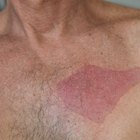
How to Treat a Burn From Nair

Homeopathy Cure for Stretch Marks

How to Treat a Perm Burn
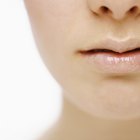
The Benefits of Cocoa Butter on the Lips

Snail Cream Benefits
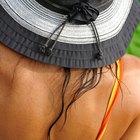
Difference Between Bronzing & Tanning ...
Brazilian Pepper Wood for Cooking

What Is Aloe Good For?

Skin Rashes Caused From Tanning Beds

What Are the Treatments for Glycolic ...

Chamomile & Aloe Skin Care

Vegan Alternatives to Lanolin in ...
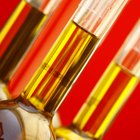
Jojoba Oil Benefits

Negative Side Effects of Paba
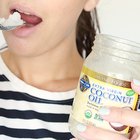
Skin Benefits of Eating Coconut Oil

Calories in Butter Beans

How to Treat Eyebrow Wax Burns

How to Treat Razor Burn with Tea Tree ...
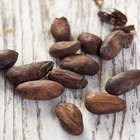
Facts on Cocoa Butter
References
- "American Family Physician"; Ambulatory Management of Burns; Eric D. Morgan, Scott C. Bledsoe, Jane Barker; November 2000
- Botanical.com: Cocoa Butter Profile
- “Chocolate: History, Culture and Heritage”; Louis E. Grivetti, Howard-Yana Shapiro
- Burnsurgery.org: Burn Scar and Its Complications
Writer Bio
Based in Florida, Andrea Cooley has been writing professionally since 1990. Her work has appeared in "Imago" magazine, and in 2007, she wrote a manuscript on healthy aging that resulted in the publication of a book. Cooley holds a Bachelor of Arts in English from the University of South Florida.
Photo Credits
burning image by Paul Heasman from Fotolia.com